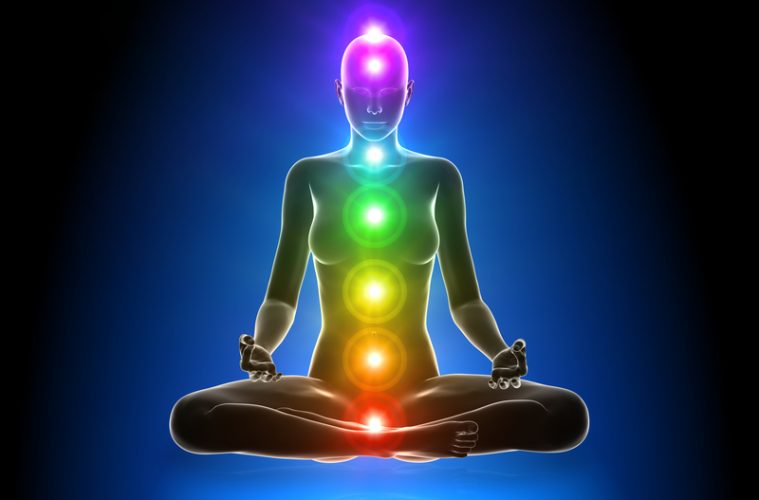
There are seven major chakras within the human body, running from the base of the spine to the crown of the head. The chakra system is often discussed in yoga, meditation, Ayurveda, Traditional Chinese Medicine, Buddhism, Hinduism, and other ancient practices. The Sanskrit word chakra literally translates to “wheel” or “circle.” Our chakras spin like wheels when we’re alive and healthy, allowing our vital life force energy, “Prana,” to flow throughout us.
When our chakras are working properly, often referred to as being in balance or aligned, they spin and allow energy to flow up the spine (or the Kundalini). However, our chakras can also become overactive, underactive, imbalanced, or even blocked, which can affect us both physically and emotionally.
The physical realm can affect our chakras and our chakras can affect our physical reality; they are meant to work in harmony together. For example, if one of your chakras is blocked, this can manifest into physical disease or pain in that area. Likewise, when we experience certain emotions, they can affect our chakras. When you’re feeling heartbroken after a breakup, for instance, this could affect your heart chakra.
When the chakras are balanced, we feel at our best and our bodies are in their healthiest state. Many people who are familiar with the chakra system can quite literally feel it, and can intuitively recognize when their specific chakras are imbalanced.
As a result, you have the power to balance your chakras yourself, which can be done through meditation, yoga, self-reflection, nutrition, energetic healing, crystals, or even just by being in a high vibration setting or taking a deeper look at your emotions. Healers can also help you balance your chakras, typically by helping you work through physical or emotional pain, but ultimately you can work toward accomplishing this yourself.
Our Seven Chakras and How to Balance Them
First Chakra: Root Chakra (Muladhara Chakra)
Where: Base of the spine. It encompasses the first three vertebrae, the bladder, and the colon.
Emotions/behaviours: The first chakra is associated with security, safety, survival instincts, basic needs (such as food, sleep, and shelter), and family. It’s also associated with our physical identities and our ability to stay grounded and present.
Physical signs of imbalance: Constipation, cramps, and any issues with the adrenal glands, spine, blood, bladder, and colon.
Signs of an overactive root chakra: Feeling greed, paranoia, and increased fear; obsessing over authority and power, material goods, or Earthly possessions and other elements of our identities.
Signs of an underactive root chakra: Feeling disconnected from nature and the Earth, daydreaming, lack of discipline, inability to focus on our everyday lives, disorganization, anxiety, and financial insecurity.
How to balance the root chakra: The colour associated with the root chakra is red, so any high vibrational foods with a naturally strong red pigment or grounding properties can help recharge your chakra (tomatoes, strawberries, beets, red apples, pomegranates, raspberries, and even protein). Crystals that are red such as red jasper, chanting “LAM,” going out into nature, using colour therapy with the colour red, meditating, practicing yoga, and addressing the physical and emotional signs of imbalance can all help to balance the root chakra.
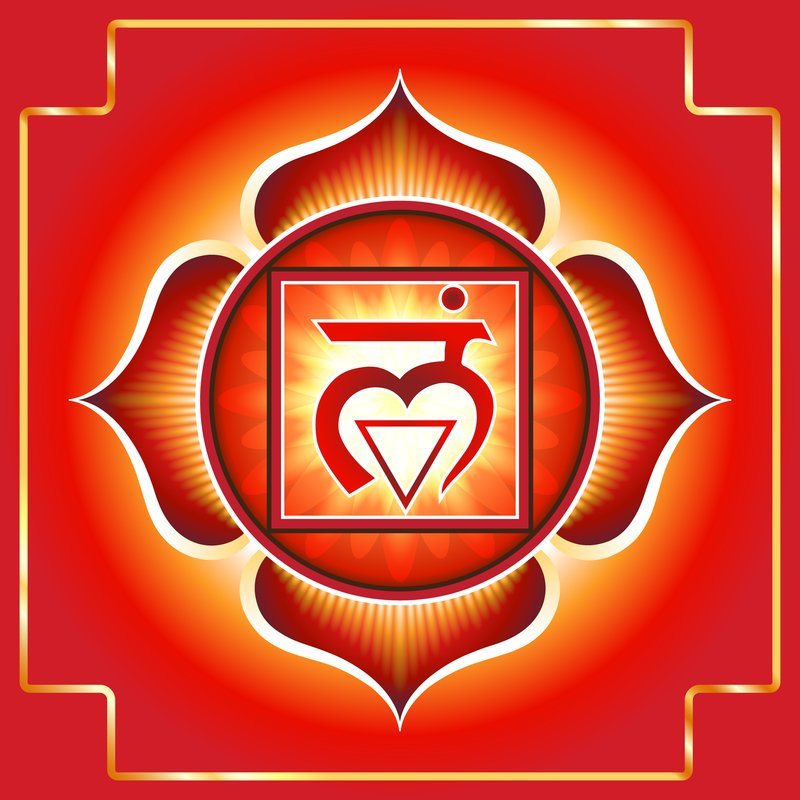
Second Chakra: Sacral Chakra (Svhadhisthana Chakra)
Where: Slightly above the root chakra on the spine, around the reproductive organs. Above the pubic bone, but below the navel.
Emotions/behaviours: The sacral chakra is associated with creativity, sexuality, commitment, passion, expression, emotions, and sensitivity.
Physical signs of imbalance: Issues with menstruation or reproductive organs, lower back pain or stiffness, urinary issues, kidney pain or infection, and infertility.
Signs of an overactive sacral chakra: Sexual addiction and heightened emotions; being overly dramatic and creating strong emotional attachment to others.
Signs of an underactive sacral chakra: Low sex drive, inability to express emotions, insensitivity, difficulty manifesting desires, lack of desires, blocked creativity, emotional fatigue, and denying yourself pleasure.
How to balance the sacral chakra: The colour associated with the sacral chakra is orange, so any high vibe foods that have a deep or bright orange colour (mandarins, mangoes, carrots, squash, pumpkin, yams, seeds, nuts, and oils). You could also use orange crystals like carnelian, chant “VAM,” do creative tasks like painting/dance/any other art form, practice yoga, meditate, or address the physical and emotional signs of imbalance head on.
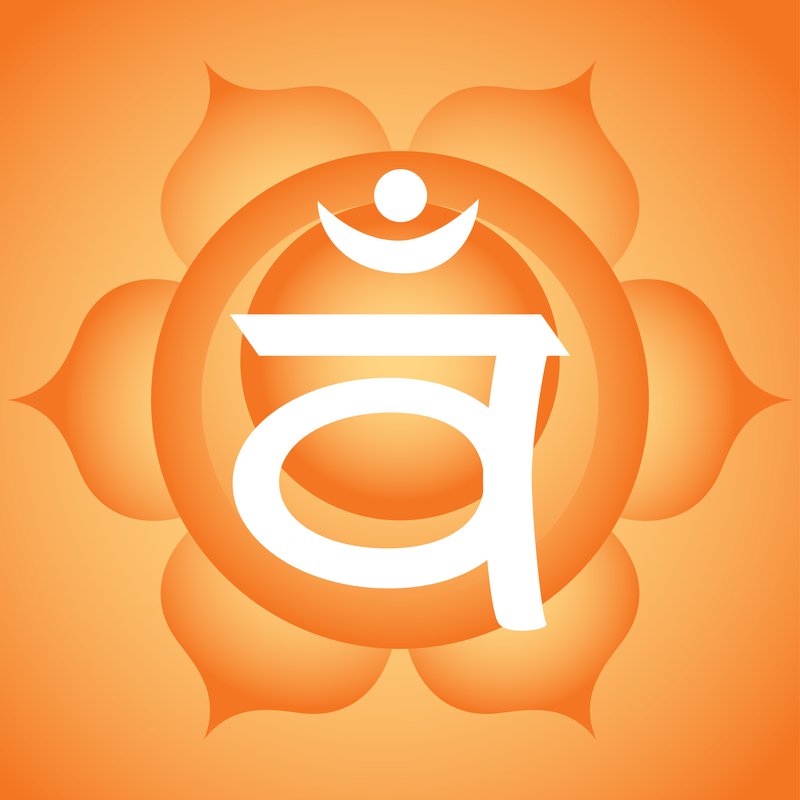
Third Chakra: Solar Plexus Chakra (Manipura Chakra)
Where: Above the sacral, slightly above the navel but below the chest. It’s associated with the nervous system, digestive system (stomach and intestines), liver, pancreas, and metabolic systems.
Emotions/behaviours: The solar plexus is entirely related to our sense of Self, our personal power, our ability to separate the Ego from the Soul, and our self esteem.
Physical signs of imbalance: Poor digestion, weight problems, ulcers, diabetes, problems with the pancreas, liver, or kidneys, anorexia, bulimia, hepatitis, and other intestinal and colon issues.
Signs of an overactive solar plexus chakra: Finding faults in others (not realizing these are a reflection of your own feelings toward yourself), being obsessed with yourself and your own interests, caring more about yourself than others, being too critical, and being stubborn in your own beliefs.
Signs of an underactive solar plexus chakra: Insecure in your beliefs, feeling lost, lack of self awareness, anxiety, conformity, seeking approval from others, feeling self conscious, low self worth, lack of self confidence, and being dependent on others.
How to balance the solar plexus chakra: The colour associated with the solar plexus chakra is yellow; try eating high vibe foods that have a yellow colour and lighter protein options (bananas, corn on the cob, fresh pineapple, yellow peppers, lentils, yellow squash, and grains like oats). You could also use yellow crystals like citrine or try yoga, meditation, chanting “RAM,” or engaging in activities that allow you to truly understand who you are as a human being and as a soul (journaling, self reflection, confidence building exercises, etc.)
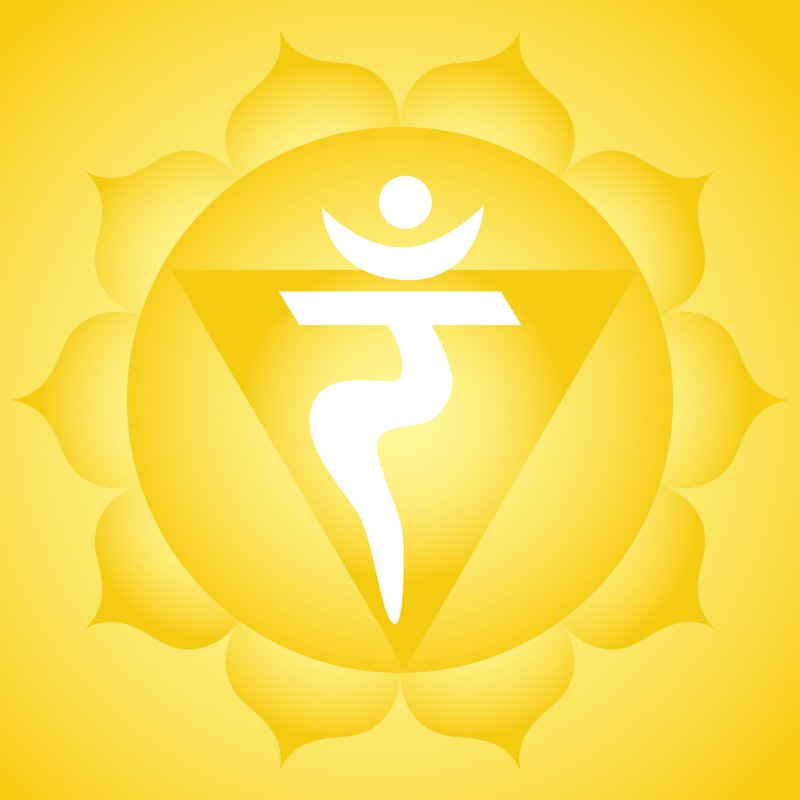
Fourth Chakra: Heart Chakra (Anahata Chakra)
Where: Centre of the chest, across from the heart. It’s associated with the heart, lungs, chest, breasts, arms, and hands.
Emotions/behaviours: The heart chakra represents our ability to love ourselves and others, to connect with other beings, and to express gratitude and joy.
Physical signs of imbalance: Heart or respiratory issues, poor circulation, and problems with the breasts (cancer, lumps, etc.).
Signs of an overactive heart chakra: Being overbearing and “too caring” toward others, placing your love for others over your love for yourself, conditional love, anger, grief, being manipulative, co-dependency, giving too much of yourself and not allowing yourself to receive, and acting like a “people pleaser.”
Signs of an underactive heart chakra: Negativity, feeling unloved, unappreciated, or like you’re “not worthy” or deserving of love, lack of self love, feeling disconnected from society and loved ones, and having difficult trusting or connecting with others.
How to balance the heart chakra: The colour associated with the heart chakra is green; you could try eating high vibrational foods that are deep green colours or are simply lighter weight foods like broccoli, kale, chard, and other leafy greens. You could also use green crystals like moss agate, meditate, practice yoga, try some “heart opening” exercises, practice self love (have some “me” time), and chant “YAM.”
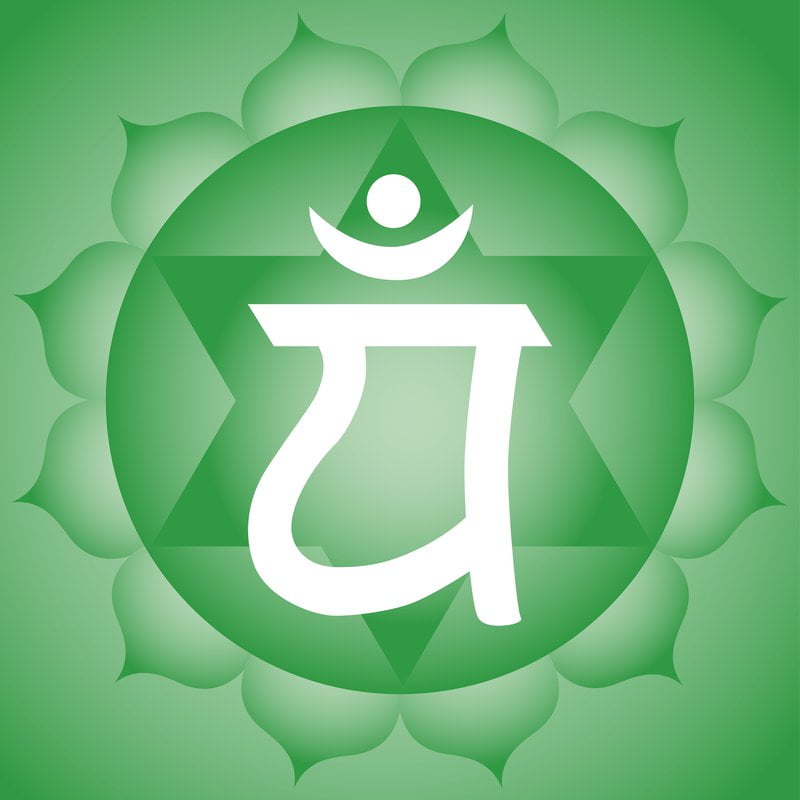
Fifth Chakra: Throat Chakra (Vishuddha Chakra)
Where: The throat center. It’s associated with the thyroid gland, neck, throat, shoulders, ears, and mouth.
Emotions/behaviours: The throat chakra relates to our ability to express ourselves vocally and to speak our truth/peace, honesty. It also relates to our communication skills and our understanding of when it’s best to speak versus when we need to listen.
Physical signs of imbalance: Sore throat, issues with the throat like an infection or tonsillitis, thyroid problems, losing our voices, neck and shoulder pain, ear aches/infections, and teeth issues.
Signs of an overactive throat chakra: Speaking too much and not listening enough, and being over opinionated, verbally abusive, and “talking back.”
Signs of an underactive throat chakra: Inability to express ourselves vocally, feeling too scared to share our emotions with others, poor communication skills, giving mixed messages to others, and being misinterpreted/misunderstood.
How to balance the throat chakra: The colour related to the throat chakra is light blue, so try eating any high vibe foods with a light blue colour or super light foods (blueberries, figs, kelp, and pretty much all fruit). You could also practice public speaking or challenge yourself to express your emotions to others, practice honesty and your listening skills, meditate, do some yoga, use light blue crystals like turquoise and fluorite, and chant “HAM.”
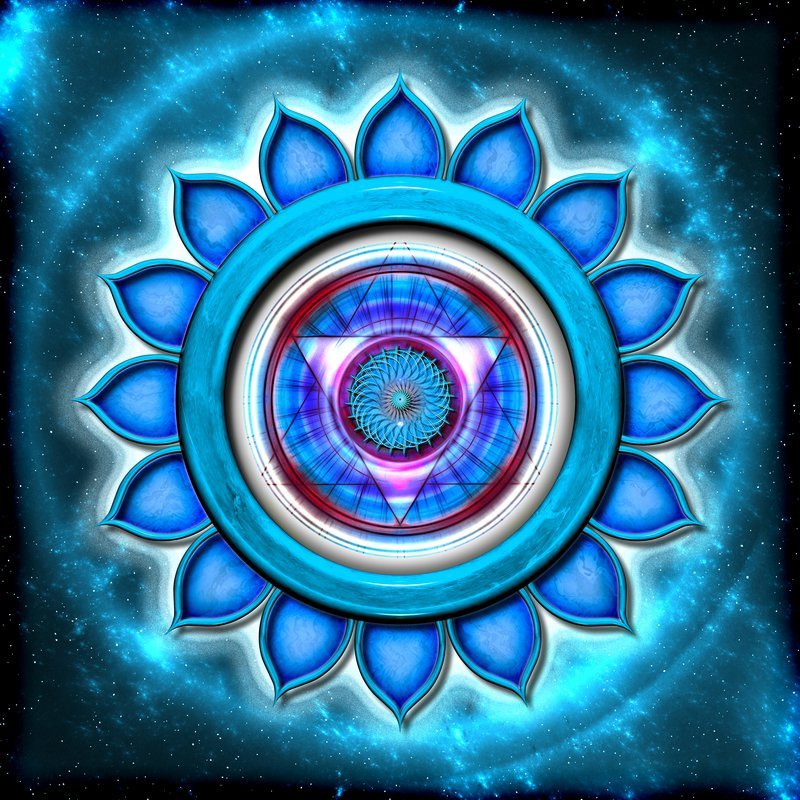
Sixth Chakra: Third Eye Chakra (Ajna Chakra)
Where: The middle of your forehead, slightly above the eyebrows. It’s related to the pituitary gland, eyes, brows, and base of skull.
Emotions/behaviours: The third eye is associated with one’s ability to access their intuition, seek the truth, critically think, access wisdom, quiet the mind, trust their inner guidance, and see through illusions.
Physical signs of imbalance: Poor vision, headaches or migraines, pineal gland calcification, difficulty sleeping, seizures, and other sleep disorders.
Signs of an overactive third eye chakra: Frequent daydreaming, chronic stress, difficulty grounding yourself, feeling lightheaded, and overly intellectual thinking.
Signs of an underactive third eye chakra: Difficulty accessing intuition, meditating, or looking inwards/self-reflecting; experiencing a disconnect between your outer and inner realities; misunderstanding the spiritual realm (or lack of knowledge about our innate spiritual nature).
How to balance the third eye chakra: The colour related to the third eye is dark blue, so you could try consuming high vibe foods with a darker pigment (plums, purple grapes, eggplant, purple kale, purple carrots, or simply tea and other light, all-natural, plant-based beverages). You could also use dark blue crystals like blue onyx, meditate, engage in self reflection, rest the mind, decalcify your pineal gland, do some yoga, or chant “OM.”
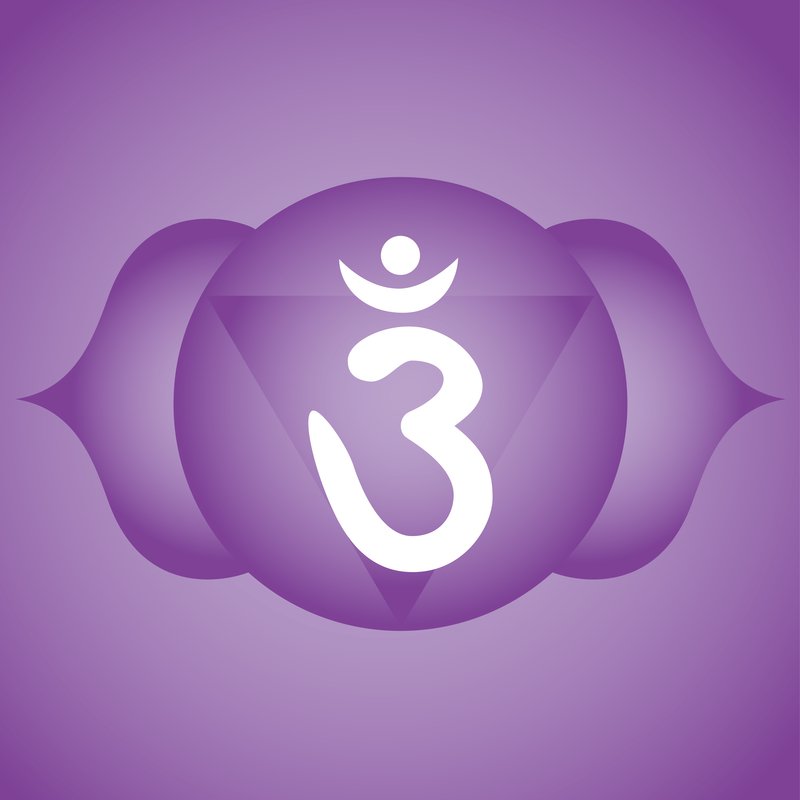
Seventh Chakra: Crown Chakra (Sahasrara Chakra)
Where: Centre of the crown of the head. Associated with the pituitary and pineal glands, brain, hypothalamus, cerebral cortex, and central nervous system.
Emotions/behaviours: The crown chakra represents the connection the body, mind, and soul have to the Source of all creation. It also relates to enlightenment, living in the present moment, understanding universal truths (the soul and our connection to one another), and knowing and trusting your inner Self.
Physical signs of imbalance: Dizziness, confusion, mental fog, neurological disorders, exhaustion, nerve pain, schizophrenia or other mental disorders.
Signs of an overactive crown chakra: Difficulty grounding yourself, focusing too much on the inner realm and not enough on Earth, having a “God complex,” or feeling superior or “more enlightened” than others (ie. having a “spiritual ego”).
Signs of an underactive crown chakra: Feeling disconnected from who you truly are, feeling like you constantly need to “soul search,” difficulty accepting our spiritual nature, lacking self awareness, difficulty meditating, and blaming “God” or others for your own actions or life circumstances.
How to balance the crown chakra: The colours associated with the crown chakra are dark purple, violet, and white, so you could try eating extremely light foods such as mushrooms, garlic, ginger, onion, lychee, coconut, and other tropical fruits. It is said that once enlightenment is obtained, one can live off only the elements. As a result, fasting can be a wonderful way to recharge your crown chakra. Spending time in nature, being in direct sunlight, meditating, practicing yoga, chanting “OM” or “AH,” and drinking water can all benefit the crown chakra.
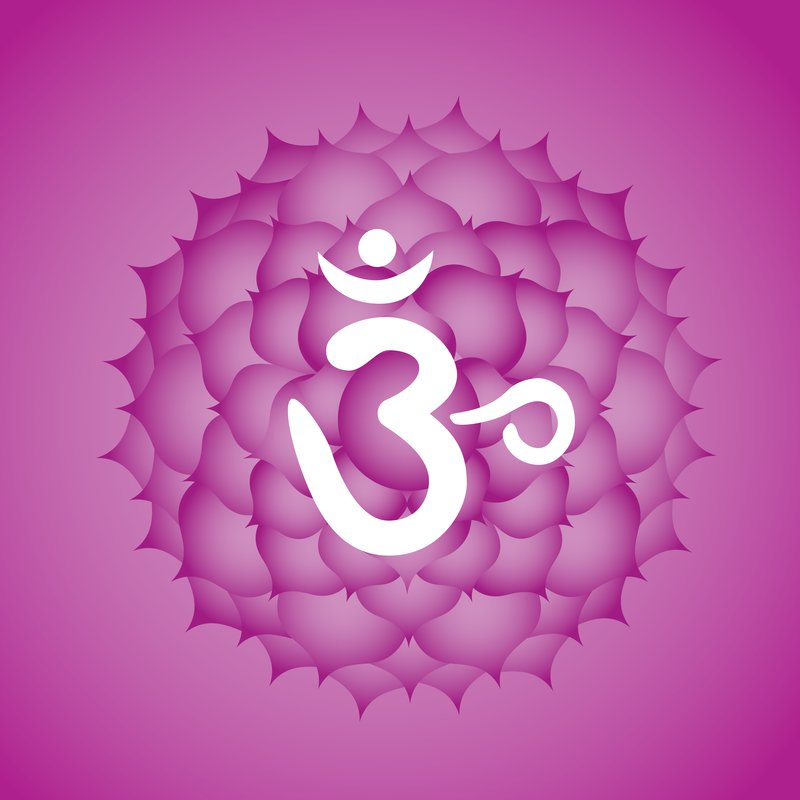
What Does Science Say About Chakras?
Below are the results from a case study done by Dr. Pradeep B. Deshpande, a professor emeritus at the Department of Chemical Engineering at the University of Louisville, which had over 100 participants in attendance. Please keep in mind that clinical studies of more than 10,000 patient cases with various health challenges have also been well documented in Russia.
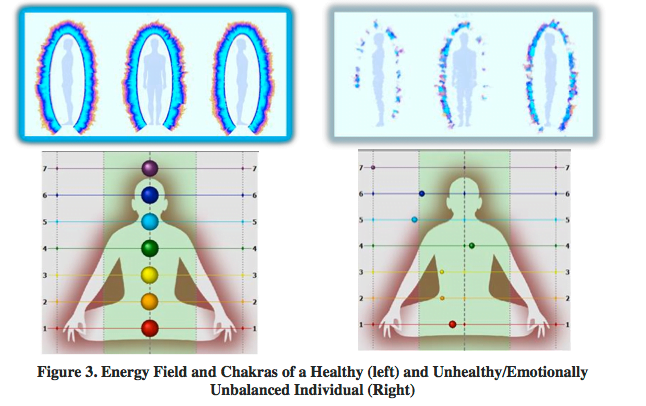

The aligned Chakras indicate that the subject was calm, relaxed, and nourished from their participation in the case study, which involved information on meditation, breathing practices, love, kindness, and intention. You can also observe a smoothing of the energy field before and after the case study workshop. Results like these were consistent with a number of volunteers.
According to Dr. Deshpande:
Each individual sector or portion of the fingertip is connected energetically with specific organs and organ systems such as the respiratory system. When the data of the 10 individual BIO-grams are collated and interpolated, an image of the entire full body energy field is created. An example of the full body energy field from a healthy and unhealthy/emotionally unbalanced individual are shown in Figure 3. The gaps and the reduced emissions and out-of-balance Chakras for the unhealthy individual are quite obvious.
Our chakras have a direct impact on our health, our emotions, and our physical reality, and vice versa. Many people and healers who have recognized this use this knowledge to further understand the health of our bodies and our minds. Even Harvard has studied the physical effects that meditation can have on the brain and the gut, and meditation is a practice that’s literally designed to balance all of our chakras.
Louise Hay is a well-known author who discusses the emotional causes of cancer in her book You Can Heal Your Life. A cancer survivor herself, she cured her disease in only six months using a combination of affirmations, visualization, nutritional cleansing, and psychotherapy. According to Hay, cancer is simply the manifestation of deep hurt, secrets, longstanding resentment, grief and/or hatred.
Radiation oncologist Dr. Carl Simonton and his wife Stephanie Matthews-Simonton, a psychologist, wrote the book Getting Well Again: A Step-by-Step Self-Help Guide to Overcoming Cancer for Patients and Their Families. The book explores how people can affect their disease process through healing their emotions, and one of the recommended ways to do so is through meditation.
CE views the chakra system as a universal truth, one that affects all human beings and even the Earth we live on. Even planet Earth has its own chakras, which you can read about here:
Understanding The Chakras Of Planet Earth
We strongly suggest that if this information resonates with you, research the chakra system further and take note of how your chakras impact your overall life!
Français
Disclaimer: We at Prepare for Change (PFC) bring you information that is not offered by the mainstream news, and therefore may seem controversial. The opinions, views, statements, and/or information we present are not necessarily promoted, endorsed, espoused, or agreed to by Prepare for Change, its leadership Council, members, those who work with PFC, or those who read its content. However, they are hopefully provocative. Please use discernment! Use logical thinking, your own intuition and your own connection with Source, Spirit and Natural Laws to help you determine what is true and what is not. By sharing information and seeding dialogue, it is our goal to raise consciousness and awareness of higher truths to free us from enslavement of the matrix in this material realm.
 EN
EN ES
ES FR
FR PT
PT NL
NL DE
DE RU
RU SL
SL SV
SV TR
TR
























Actually, there are eight chakras and four more above our heads – 12 in all. There is a chakra at the thymus gland that holds the perfect cell matrix for the body to duplicate. Unfortunately, because of humanity’s history of violence, (wars and rape) toxic vaccines and pharmaceutical drugs, that chakra – in most – has left the body. The chakra is aquamarine in color and should be encouraged to be restored to our energy bodies.
And, I’m beginning to understand that because of the different evolutions on other planets, there is a difference in the color of a person’s chakras, depending upon his/her history and where he/she is from. So if the colors don’t really feel right, it may not be right for you. (At this time in my awakening, this is something I am playing with, an impression that I continue to receive.)
Thank you for a valuable article, Edward Morgan. For those who haven’t read The Law of One books, there’s also a clear explanation in them, of how the human chakra-system is connected to the different dimensions and how blockage or unlimited opening of it determines one’s choices in 3D reality.
All chakras are portals and as such they can be used or abused. To whom do we send out invitations?
It’s why conscious use of one’s energy system, although it’s an eternal learning curve, is so very valuable in finding one’s purpose in life. To this day, we’re usually not educated in a sensible way about it, at home or in school. Once that changes, I believe that life on planet Earth will change dramatically for the better.